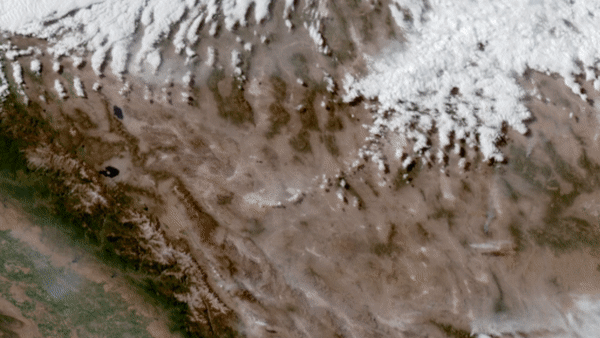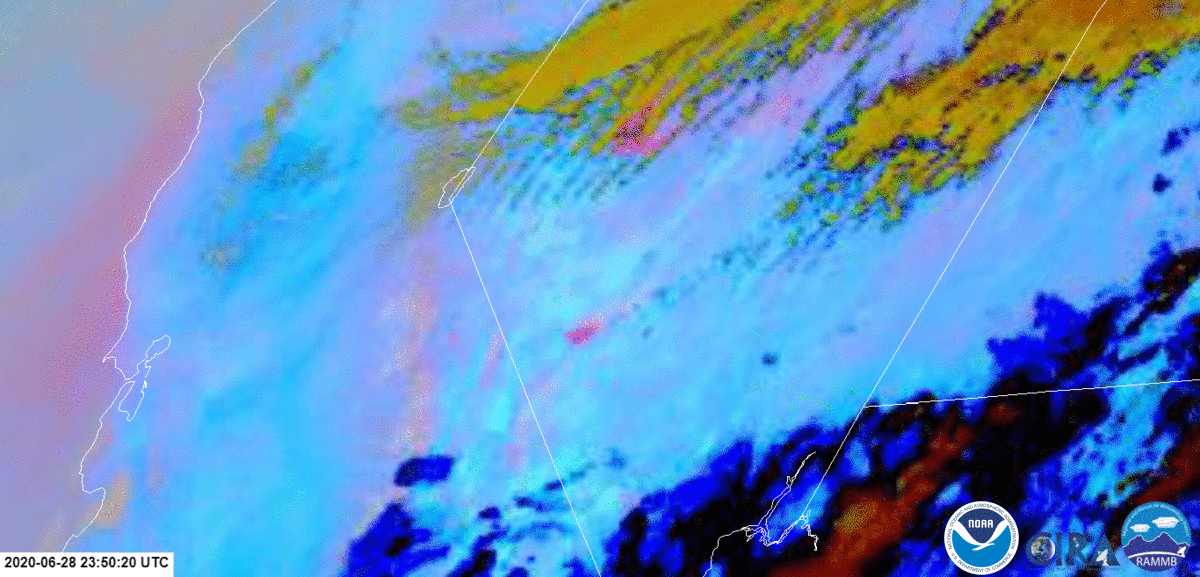
On June 28–29, 2020, NOAA’s GOES-West satellite watched a particularly intense dust cloud race across Nevada’s Mojave desert while the Brown and Twin fires released long plumes of grayish smoke to the east.
These types of dust storms are known as haboobs , and occur in dry regions throughout the world. The word itself is derived from the Arabic word,habb, which means “to blow” or “strong wind.” Haboobs tend to form as a result of thunderstorms—in particular, the thunderstorms’ downdrafts—which are relatively common in the southwestern U.S. during the North American Monsoon Season. This period of increased thunderstorms and rainfall in the region typically occurs from July through September.

In this Dust RGB imagery via GOES-East, the dust is shown in pink to better differentiate it from clouds (yellow).
As precipitation occurs during a thunderstorm or as the storm is collapsing, a rush of cool air extends ahead of it, sometimes exceeding 50 or 60 mph. This wind picks up loose desert dust and can carry it for hundreds of miles. Because haboobs can form walls of dust that sometimes reach thousands of miles high and move very quickly, haboobs can be dangerous. Not only can they make breathing difficult, but they can cause reduced visibility that can lead to motor vehicle accidents.
This GeoColor enhanced imagery was created by NOAA's partners at the Cooperative Institute for Research in the Atmosphere. The GOES-West satellite, also known as GOES-17, provides geostationary satellite coverage of the Western Hemisphere, including the United States, the Pacific Ocean, Alaska and Hawaii. First launched in March 2018, the satellite became fully operational in February 2019.
